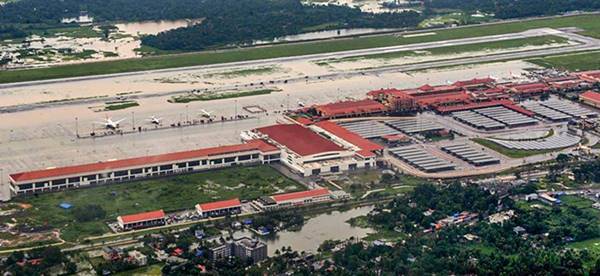Green and Eco-Friendly Airports: The Future of Air Travel
Air travel is a crucial component of the global transportation system, but it also has a significant impact on the environment. The aviation industry is responsible for generating a considerable amount of greenhouse gases, noise pollution, and waste. In recent years, the increasing concern for the environment has led to the development of green and eco-friendly airports.
These airports focus on reducing their carbon footprint and minimizing the environmental impact of their operations. Some of the key initiatives that green airports adopt include:

Energy Efficiency: Green airports make use of renewable energy sources such as solar, wind, and geothermal to power their facilities. They also use energy-efficient lighting and HVAC systems to reduce energy consumption.
Waste Management: These airports implement efficient waste management systems to reduce the amount of waste generated. They also encourage the recycling of waste and composting of organic waste to minimize its impact on the environment.
Sustainable Transportation: Green airports encourage the use of sustainable transportation options such as electric vehicles, bike-sharing, and public transportation. They also provide ample parking space for bikes and electric vehicles to encourage the use of these modes of transportation.
Green Buildings: These airports construct buildings using environmentally friendly materials and techniques. They also incorporate green roofs, rainwater harvesting systems, and other eco-friendly features in their construction.
Sustainable Catering: Green airports focus on offering sustainable food options to their passengers and employees. They source locally grown food, reduce food waste, and make use of biodegradable packaging.
Green and eco-friendly airports not only help in reducing the environmental impact of air travel, but they also improve the overall travel experience of passengers. They provide a clean and comfortable environment, reduce the noise pollution, and promote a sustainable lifestyle.
Some examples of green and eco-friendly airports include:
Amsterdam Schiphol Airport: This airport is known for its efforts in reducing its carbon footprint and minimizing waste. It has implemented an energy-efficient lighting system, and it also generates its own electricity through wind turbines and solar panels.
San Francisco International Airport: This airport has an extensive recycling program and has implemented several green initiatives, including the use of electric vehicles for ground transportation and the installation of solar panels to generate electricity.
Copenhagen Airport: This airport is a leader in sustainable airport operations and has won several awards for its green initiatives. It has implemented several energy-saving measures, including a rainwater harvesting system, and it also operates an electric shuttle bus system.

Solar Airport – Cochin International Airport
The first solar airport was Cochin International Airport in India. It was inaugurated in 2015 and is powered entirely by solar panels. The airport has a total of 46,000 solar panels installed on its premises, generating over 50,000 units of electricity per day. This initiative has not only helped the airport reduce its carbon footprint but also made it a leader in sustainable airport operations. The success of Cochin International Airport has inspired other airports to adopt similar initiatives and move towards a greener and more sustainable future.
In conclusion, green and eco-friendly airports are the future of air travel. With the increasing concern for the environment, it is crucial for airports to adopt sustainable practices to minimize their impact on the environment. By doing so, they will not only protect the environment but also contribute to the growth of the aviation industry.



